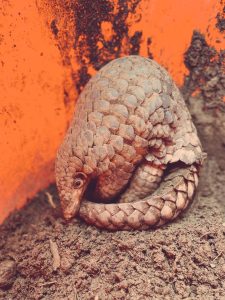There’s a new species of pangolin — and illegal trade means it’s already likely to be critically endangered



A new species of pangolin has been discovered, but already it is deemed to be threatened by illegal trade.
The Indo-Burmese pangolin (Manis indoburmanica ) is the tenth to be found and was identified by scientists who were conducting routine examination of pangolin scales seized in India.
Some of these scales were identified as coming from the Chinese pangolin (Manis pentadactyla), but others were found to have their own distinct genetic fingerprint.
Researchers subsequently found a live specimen in Arunachal Pradesh state, north-west India.

Indo-Burmese pangolin (Manis indoburmanica) (c) Zoological Survey of India
EIA Pangolin Campaign Leader James Toone said that while he was heartened to learn of the discover of a distinct new species, he was concerned that the pressures of illegal trade on all pangolins meant it was effectively already endangered.
Pangolins – commonly referred to as scaly anteaters – are shy, gentle creatures notoriously difficult for scientists to understand and there are currently insufficient resources to support wider efforts at scientific study of them as a species.
Unfortunately, continued exploitation of the species for traditional medicines, for consumption and for the ornamental use of their scales means that pangolins continue to be pushed towards extinction.
Toone said: “The discovery of the Indo-Burmese pangolin follows on from the discovery of a ninth species last year (Manis mysteria) and it is particularly noteworthy that on this occasion it has also been discovered as a live specimen.
“Due to Manis indoburmanica‘s appearance being so similar to the Chinese pangolin, it is likely to also have a similar International Union for Conservation of Nature (IUCN) listing of ‘critically endangered’ if it is to be assessed.
“It is also key to point out that pangolins as a genus (Manis spp.) are still listed as Appendix II in Convention on International Trade in Endangered Species of Wild Fauna and Flora (CITES), with only the eight main species listed as Appendix I, the highest level of protection.
“This means that commercial trade in these new species could be allowed and this would be a real concern.”
EIA’s Pangolin Campaign will be following up on this and a range of other issues at the forthcoming CITES Standing Committee meeting in Geneva from 3-8 February.